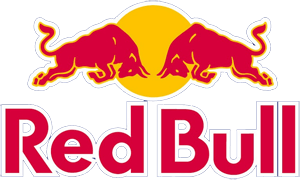Date: 2nd October 2013
 Most of us want to be more physically functional, at whatever level we need to function at. My list of important movements is very broad, from climbing to getting my truck unstuck to picking up my kids. But all of these forms of movement involve complex sets of muscles working together. My ability to do these movements is not likely to be dramatically improved doing exercises that isolate individual muscles. Yet most “gyms” in the world are full of machines and equipment whose sole purpose is to develop muscles in isolation from one another. Bicep curl machine. Lat bar machine you work with your elbows to isolate your tripceps mostly out. Ab machines that get rid of your hip flexors…. Life does NOT work like that.
Most of us want to be more physically functional, at whatever level we need to function at. My list of important movements is very broad, from climbing to getting my truck unstuck to picking up my kids. But all of these forms of movement involve complex sets of muscles working together. My ability to do these movements is not likely to be dramatically improved doing exercises that isolate individual muscles. Yet most “gyms” in the world are full of machines and equipment whose sole purpose is to develop muscles in isolation from one another. Bicep curl machine. Lat bar machine you work with your elbows to isolate your tripceps mostly out. Ab machines that get rid of your hip flexors…. Life does NOT work like that.
Our muscles have to work together, and if we don’t train them together then they won’t work together. Most of the strength gains that come initially with training are due to teaching your muscles how to work together… When I pick my daughter up off the floor into my arms I do a sort of straight-legged deadlift into a bicep curl supported by literally hundreds of different trunk (core if you must, but I hate that word, trunk is a better word) muscles, finger muscles, back, neck, etc. If each muscle I used in lifting my daughter into my arms were to light up in bright red and my skin were transparent then there probably wouldn’t be more than a few muscles in my entire body that didn’t turn red to one extent or another. A deadlift is a pretty darn complicated movement too. A bicep curl is not. Complex vs isolated.
When I first started “training” I did many of the classic muscle isolation “split” routines that came out of body building. That goal is develop each part to look nice. So you do your back one day, legs the next, chest the next, repeat. I did get stronger, but that was about looking good vs. function. I couldn’t have deadlifted my own weight without hurting my back. That’s a basic human skill we all ought to know how to do, and you won’t learn it at the average gym… If you do one thing different in your training this year go learn how to deadlift properly. I think about my form every single time I pick up a log or a kid or a heavy pack or help a friend move out a hot water heater. I had chronic back issues in my early 30s, I don’t have any now because I know how to lift heavy shit up without hurting myself. Cool. Back to training.
If I’m climbing a rock route then I bet every single muscle in my body (OK, maybe a few not) would have fired somewhere on the route.
Where this all going is that the more isolated in terms of muscle involvement an exercise is the less it is applicable to real life “functional/complex movement.” I didn’t come up with this idea at all; Crossfit certainly made it mainstream, and I learned a lot from Crossfit’s “Functional movement” mantra. That works really, really well. I’d put an uninjured Crossfitter up against anyone who trained isolation exercises at a globo gym in almost any real-world movement from running to lifting a car tire and I’d expect that the Crossfitter is going to win. Functional movement training kicks ass on isolation movement training. So exercises like pullups dominate the lat isolation machine. Squats are “better” than leg presses or quad extensions in terms of the movement and total strength in actually DOING things you get out of ’em. You could have 17 inch biceps, but if you can’t deadlift 50 pounds of squirming child then those muscles are useless.
So, if you’re training to be more functional then in general do more functional movements. But, even in a “general” conditioning program, we’re still always choosing our goals. Do we want to be more tilted toward running, or deadlifting? Doing high-output exercises for a short time, or a max single effort? “General” workouts pick a general line through many areas, great. Sport-specifc athletes need sport-specific exercises. That’s why a trained junior high runner will destroy a champion Crossfitter in a run. Skills and trained movement patterns start to trump strength pretty fast in most sports, and if you want to dominate in a single sport then you had better be training that sport, hard. Hard training for a single sport does not leave room for general fitness. That’s just reality. Nobody “wins” at being a generalist, it’s an arbitrary idea. But I do a lot of sports at a decent level, and I do find some common training ground. Broadly, I need to be able to push and pull with my arms and my legs, and I need to have good mobility and strength through the range of motion those movements require. If you can’t squat down until your heels hit your ass because it hurts that’s a problem, and you need to fix it as best you can.
Today I primarily do four functional, compound exercises that I regard as highly relevant across my sports, and then do I sports for the rest of my training. I deadlift, squat, bench (or do pushups), and do pull-ups. I’ll vary this with some GHDs or lunges (I have some weird neck issues that lunges with my hands over my head resolve) or whatever, but those four exercises about cover it for me, and I do them in my “off” seasons as well as occasionally during my season. I’ll throw in some front levers maybe, dips maybe, thrusters maybe, whatever feels right depending on sports and what I’m feeling weak at, but I need to be able to pull up, push up, and lift up to be functional both in my life and across my sports.
I do these four exercises with strict form, and never for time. If you’re training complex, heavy movements fast you WILL get injured unless you’re a fantastic genetic mutant with next-generation connective tissue. Kipping around the pullup bar like you’re being electrocuted is not the way forward to develop actual useful pulling strength, nor is bouncing the bench press bar off your chest like it’s a trampoline. I have learned to respect strength movements; doing them fast never works out well for me (or any athlete I’ve seen) over time. Ask anyone who argues how their shoulders feel in a few years. They probably won’t still be training as they’ll be injured, and I find that a needless tragedy.
I hike, climb, run, ski, bike, paddle etc. etc, but I find that if I’m doing those four exercises once to a couple of times a week plus whatever I do outside I’m doing OK as far as “general” function goes. If I drop one exercise due to time or whatever it’s squats; second, deadlifts. I hike enough and use my legs enough that it’s my upper body that needs strength and balance maintenance. During the height of my sport-specific performance season I don’t go near a bar, it’s not going to help me at that point (or it may, but not to win or kick ass at my sport, which is what the goal is…).
Food for thought. Time to go do a splice session, now there is a functional movement!!!
Posted in: Blog
Will:
I know a couple of well conditioned endurance athletes (tall and lean) who were neophyte lifters that injured their lower back performing deadlifts. Do you have any advice on how they should have been be starting out? Light weights and an observer knowledgeable on proper form?
Ryan, most cities now have some sort of power-lifting centre or program. Go learn from someone who really teaches the exercise and coaches it a lot and understands it. A good experienced Crossfit coach or a variant on that is also good, but the coaching at the boxes can be variable. Videos on the internet and a friend’s observation are also useful as they can at least say, “You don’t look like the guy in the video,” but there is no substitute for a good coach. But it’s a basic movement, you’ll probably figure it out if you use a weight that’s less than 1/4 of your own and really focus on learning what feels right and good before adding weight. When you do a deadlift right it, like anything physical, feels right.
Well-conditioned endurance athletes don’t need deadlifts if all they want to do is run or bike fast. It’s the rest of life where knowing how to do the motion of lifting heavy things properly will matter, and maybe that knowledge and skill will keep the endurance athlete running or biking or whatever with less injury downtime…
A deadlift isn’t rocket science, but it does need to be done mostly right. Good luck.
I like how you said “an uninjured crossfitter”… that really narrows down the pool!
Nice article Will! I did this kind of program this year as summer training for Nordic racing, really first time focusing on lifting. Two months of “general strength” ie. lighter weight reps of 10-12, then 6 weeks of “max strength” heavier weight 3 reps. Weighted pull ups, dips, squats, dead lifts. Feels great coupled with tons of aerobic base building for the upcoming ski race season, also felt great yesterday doing the Nose in a (very long) day! After not much climbing this summer. Hope to run into you one of these days!
For those who don’t know Peter Mayfield (last comment), well, he’s a bad-ass in a lot of different arenas, and I’m stoked to hear he’s doing well, go Peter! I too hope to run into you again one of these days Peter, hopefully outside!
Will! Excellent post. It sort of confirms for me something I wasn’t getting out of Crossfit. After a trip to Denali I came back and joined a Crossfit gym. It was a great experience and I learned a lot. However, some of the over-aggressive fast exercise sessions made me so trashed that I found I was not able to perform to 100% when it came to weekend experiences (rock, ice, hiking, etc). So, while I learned form and such, I feel like my specialized fitness for the sports I cared about actually diminished. Additionally, the cost of my gym was so much – in addition to a climbing gym – that I needed a cheaper option. So, I left the gym so I could balance my conditioning with sport specific training. It’s great stuff.
Thanks for talking through what I’ve learned so well!
Great article! I’ve never enjoyed lifting at the weight gym, but I couldn’t really put a finger on “why”. I think you hit the hammer on the head for me here. Really great, well written article. I’m gonna share this with a few friends who I think would benefit from it. I enjoy sports that use full body strength and motion, like rock climbing and grappling. So I think a renewed attack on training with your strategy in mind will help me a lot. Cheers.
Coach, Do you know Rippetoe’s “Starting Strength”? The above is essentially his protocol: Squat followed by bench or military press, followed by deadlift. Throw in pullups and that’s all you need. 3 sets of 5 reps each. I’ve done the cycle a couple of times (it gets real boring). But it keeps me functionally strong enough to do the work around the farm without injuring.
Hey Will,
Good reading, as usual. I was a student of the hybrid training movement in the early days as one of Rob Shaul’s lab rats at Mountain Athlete. I’ve spent time with MFT at Gym Jones. I really enjoyed being that strong in those days but it also made me tweeked and heavy. That weight cost me on the uphills in skimo racing and the upper body mass had no place for me on the road bike. All of this you treat thoroughly in your piece.
I would agree that the better you want to be at something the more specialized the training needs to be. Nowadays, I think that CrossFit is best used for training to compete at CrossFit. Some aspects of it, as you suggest, can help us be “harder to kill”, as Twight suggests, but it’s overall utility to prepare for something like climbing or any other sport is limited, IMO. CrossFitters may be able to participate in a wide range of activities, like you say, but excelling at those same activities requires a different approach.
The CrossFit phenomenon has been fascinating to watch and I read the site several times a week just to keep up. As you hinted at, staying musculoskeletally “healthy” while doing full-blown CF is likely unsustainable. It’s mostly a young person’s sport with the attendant youthful connective tissue. But certain doses of it have a place in an aging athlete’s repertoire. I think the dose is uniquely individual. Finding it is the trick.
My last comment is related to your selection of exercises. First of all, I completely agree that the deadlift is probably the number one movement on the planet. So much to learn there and transfer to life. I would probably add the trap bar version as it may be better for a larger segment of the population while still maintaining many of the traditional version’s benefits. Powerlifting elitists can bite me if they scoff at that! Second, I probably disagree with the inclusion of the bench press. This is simply a hold over from decades upon decades of muscle head gym lore. Better would be to go even further back in time and recognize the original pressing standard, the overhead press. Couple this with the dip and you have a better mix and, in my opinion, more “functional” (kinda hate that word) pressing ability. That whole laying down on a bench and pushing a bar away from your chest just doesn’t help much else besides bench pressing. Onward.
Thanks again for your always thoughtful insight. Hi to Kim for me, eh.
GHD’S ? Please enlighten.
Thanks
Turkish get ups, add that and ditch the bench
I'm more than happy to hear your thoughts on what I've written. Please note that all comments will be moderated before publishing. Thank you for joining the conversation.



